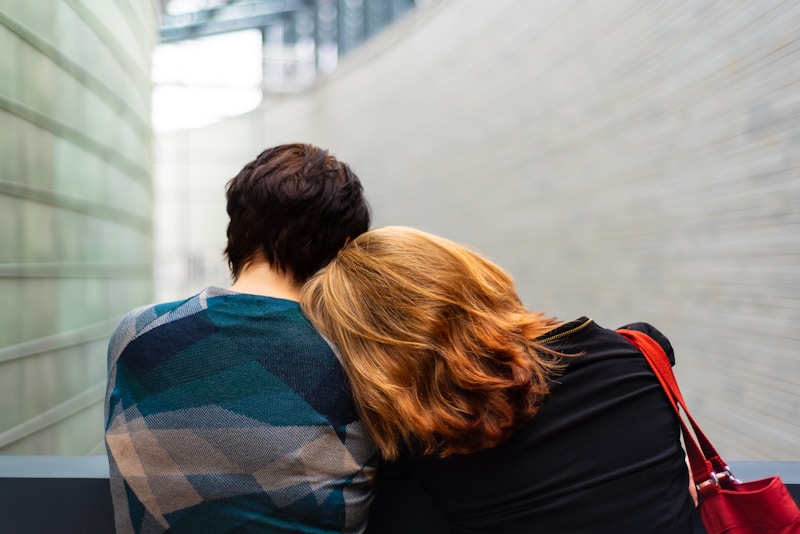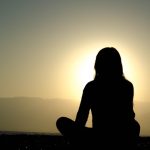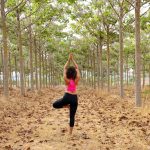Ashley Russell is an experienced yoga teacher and trainer, choreographer, registered mental health nurse, and EMDR trauma therapist (recently highlighted in Prince Harry’s new documentary on mental health). He talks to YogaLondon about growing up gay in the 80s, about trauma therapy, and how yoga gave him a place to simply be a ‘body in space.’
1. What drew you to yoga?
PE was not my thing at all at school, so it’s funny that for most of my life I’ve ended up being very physical. When I was 19 and studying to be a mental health nurse I went along to a dance class with a friend and was hooked. I went on to have a dance career, training in Holland and going on to become a choreographer there. In fact, that’s where I met my now-husband, who’s also a dancer.
My first experience of yoga – which was a natural transition for me as a dancer – was at the Iyengar yoga centre in Bristol. I remember the studio so well, the step up into the studio, the feel of the floor, the staging area, the light from the top windows, the noise of the traffic outside. I have fond memories of the place, I think perhaps as somewhere that I truly felt accepted as a body in space, and not judged or seen for who I was or what I did.
2. And what kept you coming back to yoga?
I do remember lying on the floor in śavasana and feeling content that I had found my space. It kept me coming back. That and the feeling that this was something that I could do – I used to be able to do a pretty good revolved paschimottanasana for example.
Although my foundational yoga experience was in Iyengar yoga I found that it was a little stuck in the past, as well as the fact that the teacher training is too long for most regular people that need to earn a living. I wasn’t drawn to Ashtanga yoga either as I prefer creativity rather than one set series.
3. You’ve taught an unusual form of yoga called Gyrotonics and Gyrokinesis – tell us more.
Like Pilates, there are two forms of this form of movement exercise. Gyrotonics is on machines and Gyrokinesis is mat or chair-based. However, unlike Pilates, the practice is circular and not linear. It was developed by an injured dancer who studied yoga very deeply and developed an energy-based system for dancers. It was originally called ‘Yoga for Dancers’.
I taught it in New York while my husband was studying at Juilliard. Teaching yoga in New York meant I worked 16-hour days and was super poor. This was when I was in my 30s and it was great experience, but it certainly wasn’t sustainable.
I’m not licensed anymore as it was expensive to renew the license and it’s not as popular here as it was in the States.
4. You’re now a Senior teacher at the Bristol School of Yoga – how did you get involved there?
I met Laura Gilmore, the founder of the Bristol School of Yoga ten years ago when I started coming to classes. I was then asked to start teaching there and while teaching I did my 500-hour qualification (on top of the 375 hours I had already done in New York).
Now I teach on the 200-hour and 500-hour teacher training courses. We have several groups running at a time so it’s a lot of work, but very enjoyable.
5. What do you enjoy about teacher training?
Teacher training is very different from teaching a regular yoga class. In a yoga class, the students have multiple reasons for being there – fitness, taking a break from work, getting out of the house etc, as well as varying degrees of commitment to yoga.
In a teacher training session, you have a room full of students hanging off every word, while also questioning things too. They are ready to learn and are curious, which means that I have to engage more deeply with the subject, and also question my own knowledge base.
6. You’re also a registered Mental Health nurse – how does that work with the yoga teaching?
I work two days a week as a contracted mental health nurse. I used to be employed full time and was on a career trajectory aiming at senior management, but I then came across the reality of the politics of the organisation and I had to leave, which was tough.
Now I just keep my hand in and offer wellness sessions in primary care, as well as keeping in contact with psychotherapists and other mental health professionals.
7. You’re also a trained EMDR therapist – tell us more about that?
I discovered EMDR (Eye Movement Desensitisation and Reprocessing) when it helped me recover from a work-related incident where I was involved in a murder investigation. EMDR was effective in an unusual way. There are no ‘talking things through’ – it’s connected to the body state. Some traumatic experiences are held in the body and the nervous system and when you have a trauma response your thinking centre goes offline – you can’t think and you freeze. EMDR helps to keep all your states ‘online’, as it were.
8. What’s the best thing about being a trauma therapist?
I have helped people with anxiety, depression, PTSD, childhood sexual abuse, survivors of war zones, and refugees. My goal is transformation, and to witness that is the best thing I can possibly imagine.
I recently helped a woman who couldn’t brush her teeth while looking in the mirror, as that meant she’d have her back to the door, which she couldn’t do due to a past traumatic event. She recently told me that without thinking about it, she was now brushing her teeth and looking in the mirror – her life had been changed for the better.
8. What’s unique about you as a yoga teacher?
I think my experience as a mental health nurse, trained trauma therapist, dancer, and yoga teacher is pretty uncommon. My experience of both the mental health world and the yoga world is pretty unique, and my clinical experience is very useful.
There are quite a few yoga teachers out there trying to be trauma therapists and there is the potential for a lot of extra damage to be caused. We need to be careful to be boundaried in the yoga world, and not pretend to know things that we don’t.
9. How can the yoga world be better at being fully inclusive?
I didn’t have a bad upbringing, but growing up in the 80s as a gay man there was a lot of bullying, and I couldn’t express my teenage lust for another boy. You think it’s normal, it’s only as I’ve got older that I realised that I internalised a lot of the opinions and names that were thrown at me, and there was certainly inherent shame.
The yoga world can certainly be better. I have a trans friend who’s transitioning from female to male, and we’ve spoken about how to use inclusive language in a class. For example, rather than saying, ‘Any women on your period, please avoid this pose,’ just broaden it to ‘anyone with a period at the moment.’ It’s simple, but inclusive, and doesn’t make assumptions about gender.
The important thing to remember is that we all make mistakes, but if we make an effort to learn it will make a big difference. The truth is that while there is a place for segregated classes, e.g. women-only, men-only, etc what we’re aiming for with yoga classes is integration, not segregation. Our differences should be celebrated.
10. What would be your top three tips for maintaining a yoga practice?
My first tip would be to practice little and often. Many of us have this unrealistic, idealised goal of 90 minutes of practice and pranayama a day and we just have to get real! We have lives to live!
My second tip would be to aim for a balance between discipline and pushing your body too hard. Learn to listen to your body.
Finally, don’t forget to have fun! We can get very serious and precise about our yoga practice, forgetting that finding the joy is also important.
11. What’s the best thing about being married?
My husband and I have been married since 2009 and together since 2002, so that’s a long time! The best thing about being married is always having someone there to think things through with, so that you have a unity in your decision-making, and you can support each other in everything that you do.












